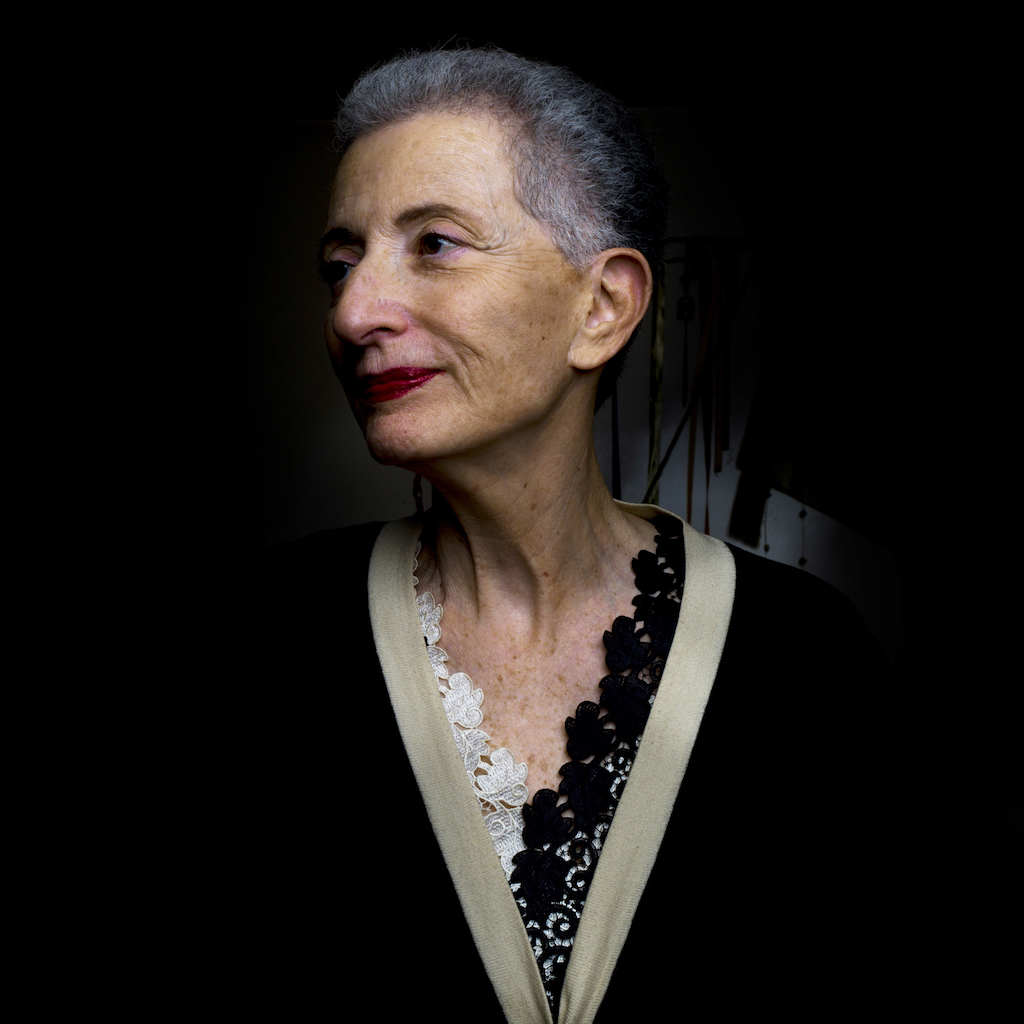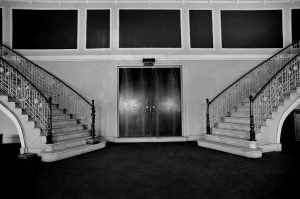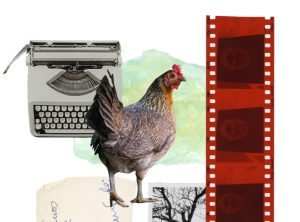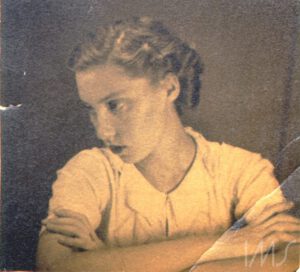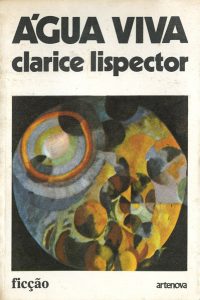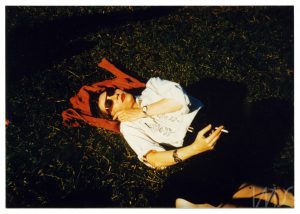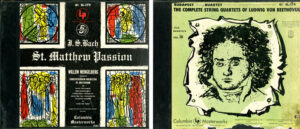Gert Bange, Patrick. On a Reading, the Secret Happiness. IMS Clarice Lispector, 2023. Disponível em: https://site.claricelispector.ims.com.br/en/2023/09/22/de-uma-leitura-a-felicidade-secreta/. Acesso em: 07 January 2026.
In a small, vast, and brilliant book called Three Steps on the Ladder of Writing, by Hélène Cixous (1993), the author invents a ladder. She begins like this:
Let us go to the school of writing, where we’ll spend three school days initiating ourselves in the strange science of writing, which is a science of farewells. Of reunitings.
It will begin with: H
This is what writing is.
I speak to you today (today April 24, 1990, today June 24, 1990) through two languages. From one day to another, from one page to the other, writing changes languages. I have thought certain mysteries in the French language that I cannot think in English. This loss and this gain are in writing too. I have drawn the H. You will have recognized it depending on which language you are immersed in. This is what writing is: I
one language, I another language, and between the two, the line that makes them vibrate; writing forms a passageway between two shores (CIXOUS, 1993, p. 32)
In this book, Cixous is taken to three schools by writers that she loves: the School of the Dead, the School of Dreams, and the School of Roots. One of the books that transport Cixous to the School of Dreams is Clarice Lispector’s second published novel, The Chandelier, from 1946 (1999).
Cixous approaches The Chandelier with patience. She did not read the entire book, she did not devour it, when she mentions it for the first time, saying: “Here’s a book ‘I read’ but haven’t finished reading” (CIXOUS, 1993, p. 58). “I read,” written in quotation marks, announces the problem that can be stated in this way: when “I read,” what is it that actually reads, what is being read? The School of Dreams is this place where we descend to be danced, by letting the text guide us.
Cixous forms a scene of reading, marking what escapes. For example, the name of the book is not evoked without Cixous first talking about two Freudian slips. She forgets to bring two texts to class, Freud’s The Interpretation of Dreams and Mandelstam’s complete prose and correspondence. This forgetting is not considered as outside the economy of the class, but included in her text, with the delicacy of a “perhaps:” “Perhaps at the School of Dreams we also work with lack, absence, and omission.” (CIXOUS, 1993, p. 58). This begins to shape Cixous’ reading of the writings that lead to the School of Dreams: as she will later say, they are those that work with moments of non-reading, empty spaces that make up the fabric of reading, and with forgetting, the secret engine of a writing that directs us. As she observes:
Here’s a book “I read” but haven’t finished reading. I don’t make an effort either to read it or not read it. I let it be, it’s in the room where I am, often I don’t read it and during this time it beams obscurely. It’s a form of reading. (This is how we get to the School of Dreams, by making a vast detour.) (CIXOUS, 1993, p. 58)
This way of reading, permeated by a distracted patience, a spontaneous rhythm of arriving at the book, shows the birth of an inaugural reading of one of Clarice’s books. Reading is being born right now. And Cixous does not remove this scene from the economy of reading, thus making it look like a kind of game of seduction between the reader and the book.
The game takes place through a dance with the waiting, with the promise, through a presence that may be offered erotically, sometimes, who knows, as a distance. Although there, the book patiently awaits the reader’s hands. She, for her part, writes, narrating not the story inside the book (which, in fact, she will soon say does not exactly tell a story), but the movements around it. This “vast detour” that is already reading.
This fresh way of reading The Chandelier echoes another reading by Cixous, about a brief story by Clarice, called “Covert Joy” (1981). It concerns the story of a skinny girl who goes through “Chinese torture” (LISPECTOR, 2022, p. 370) waiting for a book, in the hands of a fat and sadistic girl, until a good mother, finding that daily visit strange, realizes what is happening and gives the book to the skinny girl “for as long as I [she] liked,” to which the narrator says: “Do you understand? It was worth more than giving me the book: ‘for as long as I liked’ is all that a person, big or small, could ever dare wish for” (LISPECTOR, 2022, p. 371). I quote the short story:
I walked away very slowly. I know that I was holding the thick book with both hands, clutching it against my chest. As for how long it took to get home, that doesn’t really matter either. My chest was hot, my heart thoughtful.
When I got home, I didn’t start reading. I pretended not to have it, just so later on I could feel the shock of having it. Hours later I opened it, read a few wondrous lines, closed it again, wandered around the house, stalled even more by eating some bread and butter, pretended not to know where I’d put the book, found it, opened it for a few seconds. I kept inventing the most contrived obstacles for that covert thing that was joy. (LISPECTOR, 2022, p. 372, our emphasis)
With this short story, Cixous writes, in the essay “Extreme Fidelity:”
Yes, felicity can only be clandestine. will always be clandestine, happiness is its own secret, one can really have only if one knows how to have in a way that does not destroy, does not possess.
The secret: remembering at every instant the grace of having.
Keeping in this having the breathless lightness of hoping to have. Barely having after not having had. Always keeping in oneself the emotion of almost not having had. Having is always a miracle. (CIXOUS, 1991, p. 160)
Cixous restages this way of having a book and the way that the girl in the short story approaches the book, the way that she knows how to have it, that she knows how to invent a way to prolong having the book with the way that Cixous approaches The Chandelier, since she also invents a way to prolong this approach, by inventing a pace of approach that does not end quickly upon entering the book, like the skinny girl in Clarice’s story. She takes pleasure in this diversion, which is already her way of reading and having Clarice’s book. Thus, Cixous approaches The Chandelier by ciphering this way of having, by transforming it into a bread and butter that is reverberated, recited, resurrected in the act of reading.
By making the approach to The Chandelier also a covert joy, Cixous goes inside the book. (She was opening it). She does not start at the beginning, but with a scene in which Virgínia, the main character, looks at herself in the mirror thinking about “go[ing] beyond the limits of my [her] life” (LISPECTOR, 2018, p. 69). She closes the book, talks about other authors. She returns. She reads another scene, with Virgínia’s dream. She closes it again. Cixous quotes the passages with no hurry, letting the text speak for itself, breathe, be heard. Let us listen, with her, to the beginning of the book:
She’d be flowing all her life. But what had dominated her edges and attracted them toward a center, what had illuminated her against the world and given her intimate power was the secret. She’d never know how to think of it in clear terms afraid to invade and dissolve its image. Yet it had formed in her interior a far-off and living nucleus and had never lost the magic—it sustained her in her unsolvable vagueness like the single reality that for her should always be the lost one. (LISPECTOR, 2018, p. 3)
The book begins, so to speak, inside. And inside a secret, or rather, that which is not fully accessible through communication. The fear that exists is that of the dissolution of an image, which is sustained by the inaccessible and magical secret. What is there, in the secret, is what, from the outset, should be lost. I accompany Cixous, when reading these first lines that she writes about liking books in this way:
This is the first sentence of the book. I like a book that begins like this. It begins inside, in the body.
These are books you can read. These are real books. You open the book and you have already crossed the border. You are in the text. You are in the world of the text. You are already in the other country. It already shines of the other country. We are already there by a multitude of signs. And yet we understand nothing. This is how we enter a book. We are blind and ignorant and gradually things become clearer (CIXOUS, 1993, p. 82)
So, blind and ignorant, we are cast into the first scene of the novel, in which Virgínia, the main character, and Daniel, her brother, see a hat in a river. In the face of it, they assume that a drowning occurred and keep the secret to themselves. Throughout the book, the hat will return as one of the components of Virginia’s childhood.1 From the first scene to the last, a hat appears, intermittently. The scene continues like this:
Daniel had turned his head quickly — stuck on a rock was a wet hat, heavy and dark with water. The running river was tugging it with brutality and it was putting up a fight. Until losing its final strength it was taken by the light current and in leaps disappeared into the foam almost happy. They hesitated surprised.
“We can’t tell anyone,” whispered Virgínia finally, her voice distant and dizzy.
“Yes . . . ,” — even Daniel had been frightened and was agreeing . . . the waters kept flowing — “Not even if they ask us about the drow — ”
“Yes!” Virgínia almost shouted . . . both fell silent with strength, their eyes bulging and ferocious.
“Virgínia . . . ,” her brother said slowly with a rawness that left his face all angles, “I will swear.” “Yes . . . my God, but one always swears . . .”
Daniel was thinking while looking at her and she wasn’t moving her face waiting for him to find in her the answer.
“For example . . . that everything that we are . . . turns to nothing . . . if we speak of this to anyone.”
(LISPECTOR, 2018, p. 4)
This is the initial pact between the siblings. After it, the entry, including our entry as readers into the scene of the supposed drowning, is barred. Cixous writes the following regarding the novel’s opening secrets: “I hope this sounds mysterious to you. We are immediately drawn into the center where there is the secret. Do you want to know what the secret is? You can’t because it is a secret” (CIXOUS, 1993, p. 84-85). Cixous closes the book, does not want to devour it, wants it to last, for the desire to read it to last. Thus, she listens to the waiting for the book that she has in her hands:
There is something extraordinary in our relationship with books. The book is the Door – the Dream of the other that doesn’t escape us – that dreams us and waits for us. […] This is how O lustr[e] waits for me, and I am in no hurry. It gives me time. (CIXOUS, 1993, p. 58)
After and before reading Clarice, Cixous is already reading Clarice. She knows, like the skinny girl, how to make the book free from even having a beginning or an end, by reading it as a place, open to all writing experiments: “Writing giving in to itself: this is what happens in O Lustr[e]. This book has neither beginning nor end. It is a place” (CIXOUS, 1993, p. 100). And it also says:
O lustre gives time because it is itself carved from time, it is so rich, thick, so well-thumbed that it is pure writing substance. It doesn’t tell a story. It makes us feel, taste, touch life. It is there like an immobile, eternal, complete person whose never-failing characteristic is to produce something continually strange: patience, despite or with desire. I haven’t finished reading O lustre. I am in the process of reading it, and this “in process of” includes passages of nonreading through which the book continues to emit its beams. (CIXOUS, 1993, p. 58)
I thought that I had three books in my library that had no beginning or end: In Search of Lost Time, by Marcel Proust, The Thousand and One Nights, and Arcades Project, by Walter Benjamin. I see now that The Chandelier also has no beginning or end. Being a place, we can go to it, return to it, already with it, with what it does not cease to give us as a way of reading: reading without the book ceasing to emit its rays.
- I propose a reading of the hat in The Chandelier in my dissertation Um bolinho, um chapéu: passagem secreta entre Marcel Proust e Clarice Lispector (A Cake, a Hat: A Secret Passage Between Marcel Proust and Clarice Lispector). [↩]

